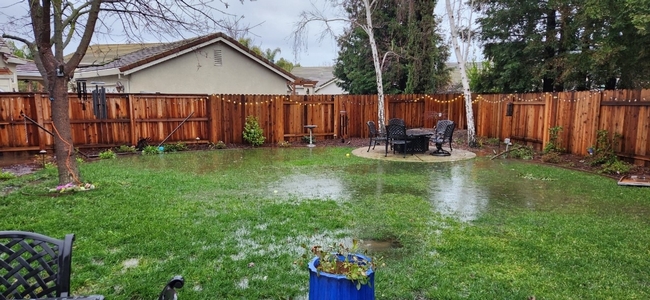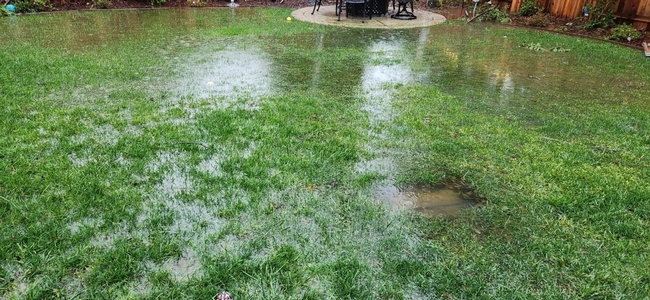[Originally published on the UC Master Gardener Program Statewide Blog on January 10, 2023]
Proper irrigation and drainage are critically important for the health of plants and trees. But what happens when Mother Nature throws an atmospheric river curveball, and your yard or garden is now under water from heavy rains or floods?
Good garden soil contains a network of pore spaces filled with water and air. Both are necessary for healthy roots and beneficial soil-dwelling organisms. When the pore spaces fill with water, air is no longer available to the root system, and the roots become susceptible to root-rot organisms. Understanding the effects of flooding on plant health and caring for them after a flood event is important to saving your plants and garden.
Once the floodwaters have receded, assess the damage to your garden and begin the recovery process. There are a few things you can do to minimize the damage to your plants from flooding:
- Remove any debris, such as mud and silt, that may have shifted and accumulated on your plants.
- If the soil is waterlogged, improve drainage by digging ditches or furrows to redirect water away from plants.
- Check the soil for compaction and loosen it up with a garden fork. This will help to improve drainage and make it easier for water and nutrients to reach the roots of your plants.
- Wait until the soil dries out before working with it in order to reduce additional compaction. Avoid walking on waterlogged soil to prevent compaction and further root damage. Stay off a boggy lawn!
- Inspect your plants for damage to the roots, leaves, and stems. Remove any damaged parts, and prune your plants back to healthy growth if necessary.
- Remove contaminated material. Consider that any garden produce touched by floodwater may be contaminated and discard it. While the risk of contamination is low in residential areas, runoff from septic systems, pastures, or industrial areas can carry potentially harmful microbes and chemicals.
- Monitor your plants closely for signs of stress, such as wilting or discoloration, and address any issues that arise as soon as possible.
- Once dry, start to water your plants gently and gradually to help them acclimate to the new soil conditions.
Connect with your local UC Master Gardeners!
Recovering from a flood can be a difficult and time-consuming process, but with proper care and attention, your garden can recover and thrive. The UC Master Gardener Program is available to help! For gardening questions and local county resources, click here to Find a Program. You will be redirected to your local county website and contact information.
Source: Flood: Plant Stress in Extreme Wet Conditions, https://marinmg.ucanr.edu/PROBLEMS/EXTREME_CONDITIONS/Flood/

